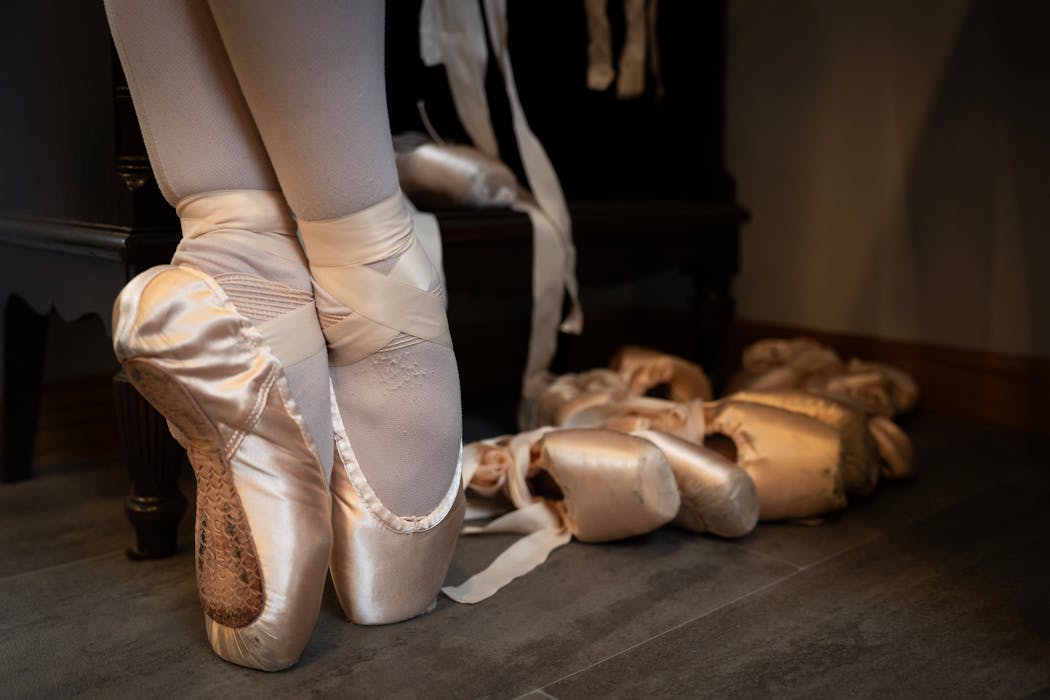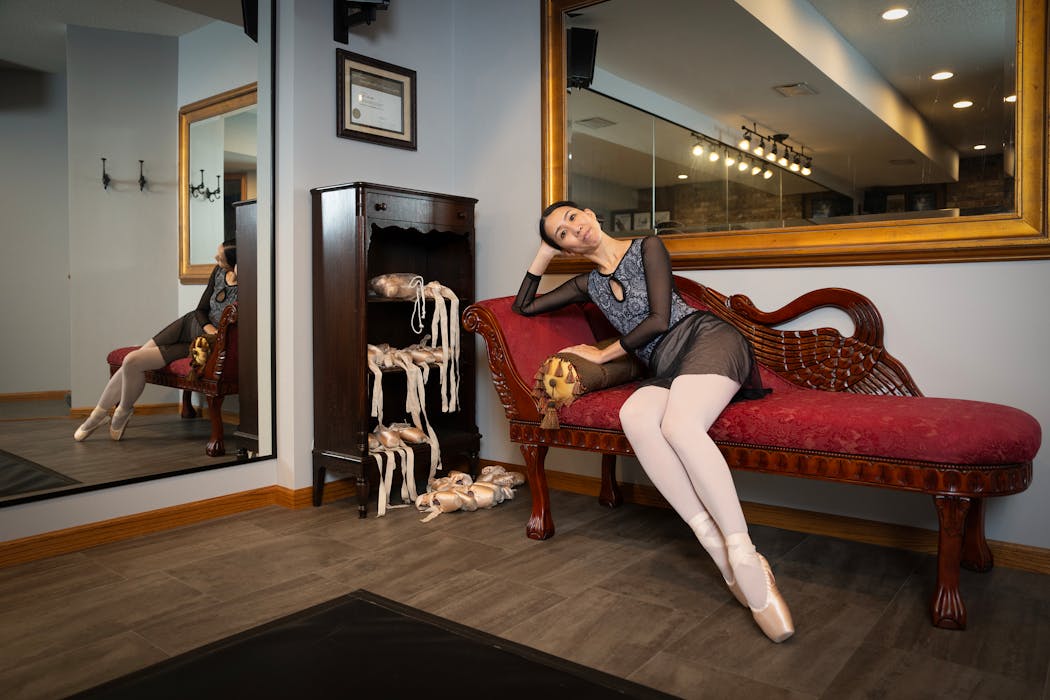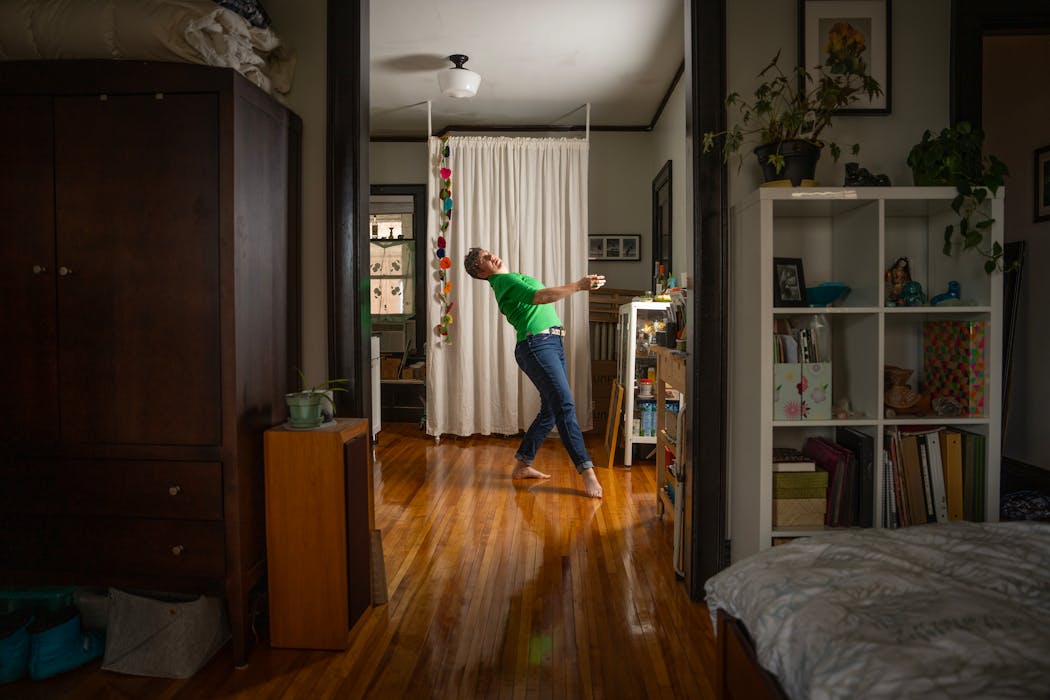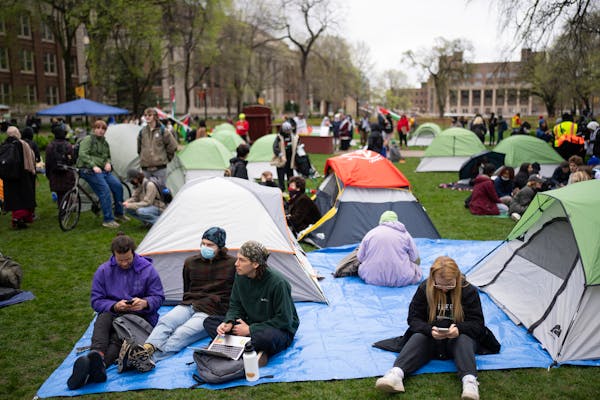When creating an atmosphere for working from home, desks and computers often come to mind. But if you're Rita Mustaphi, Yuki Tokuda and Megan Mayer, home "office space" means mirrored walls, ballet barres and room to move.
Whether spurred by the pandemic or other reasons, these Twin Cities area dancers have created dance studio spaces in their homes that are here to stay. They're finding that having a dedicated personal space to do what they love has its benefits, including saving money on rental studios and offering more flexibility.
"Anytime I have an idea, I can just go downstairs and practice," said Tokuda, a ballet teacher, dancer and choreographer.
But they also reveal that when it comes to practicing a pirouette, an attitude or other dance moves and developing choreography, working from home with limited space is not as easy as it sounds.
Here's a look at these dancers' takes on their home dance studios and how they did it. Although they differ in interpretation, style and cost, they all make big impacts in small spaces in more ways than one.
"I can forget everything happening around us and just go there and reflect on my culture, reflect on my dance, reflect on our relationships," Mustaphi said. "Oftentimes, I just go there and read a book, you know, sitting there, because it's so peaceful."
Yuki Tokuda, ballet teacher, dancer and choreographer
The McKnight Dancer Fellow's contractor husband built her a dance studio when they lived in south Minneapolis. So when they moved three years ago, putting in another studio was imminent.
"When we moved to Burnsville, he worked right away, because he knew I needed to have a space to create and practice and also teach," Tokuda said.
Their home is airy and filled with light. Overlooking trees in the backyard, it feels like it is in the woods. "This is our dream home," she said.
Now that the new decked-out ballet studio is set up, Tokuda (who will present her work with colleague Rita Mustaphi in the Fall Forward Festival at the Cowles Center running Oct. 29-Nov. 3), uses her home space to choreograph dance pieces, take classes with a master teacher via Zoom and teach private lessons.
Distinct features: The studio floor is constructed with insulated Dricore subflooring, and a layer of marley, a slip-resistant, rubber-like material often used in ballet. The room has one wall of mirrors, two movable ballet barres and an antique burgundy fainting couch on one side.
A little help from: Tokuda's husband worked on the studio in his spare time and did all of the installation himself. More recently, considerable work was done to the ventilation system, as it's a basement space without windows.
Pros: In addition to being able to go downstairs whenever she has an idea, she equally loves that "I don't have to go outside," she said.
Cons: "The ceilings are not that high, so if I need to rehearse with a partner, we modify. We can still talk about the idea of the movement, even if we can't actually do it."
While Tokuda hasn't quite offset the cost of installing a dance studio with what she's making for dance lessons, she plans to eventually. Plus, "at tax season, we can deduct the space as a cost of business," she said.
On the wish list: One side of the studio has a non-working fireplace. The plan is to convert it to a gas fireplace in the future.
Rita Mustaphi, artistic director of Katha Dance Theatre
The kathak dancer and choreographer and her husband moved into their lakeshore property in Crystal 36 years ago. The contemporary home has multiple levels, a tropical greenhouse with key lime and pomegranate trees and a studio in the basement, which doubles as a dance and yoga retreat for Mustaphi and exercise room for her husband. It's also where she stores her dance costumes.
At 20 by 20 feet, "it's not too small, but it's a nice size." Besides using it to develop her choreographic ideas, Mustaphi also utilizes the space as a recording studio for guest musicians working with the company from India.
Distinct features: The sprung floor of Mustaphi's studio is surrounded by tall mirrors and spiritual items from Hindu spirituality, like statuettes of the lord of wisdom Ganesha, and the goddess who protects against evil, Goddess Durga.
There's also a prayer altar, called a Mandir, and a photo of Mustaphi's late guru, Pandit Birju Maharaj. She has incorporated colors and textures from her native India to give "the feeling of back home," she said. There's even a portrait that one of her students painted of Mustaphi during the pandemic, which sits above a small table at the side of the dance floor.
A little help from: Mustaphi and her husband took architectural classes when they first moved in. It helps that her husband was a professional electrical engineer, who worked for NSP (now Xcel Energy) when they built the studio 3½ decades ago. They also hired a contractor.
Pros: In addition to the convenience of heading downstairs morning, noon or night when inspiration hits, Mustaphi has also been able to save money. "All these years, if I had to rent a space, the cost would have been humongous."
Cons: A conflict arose early on, when Mustaphi first began to host classes in her basement studio 3½ decades ago. "The neighbors — in particular, one neighbor — did not like it." Katha Dance Theatre now has its own separate studio in St. Louis Park for classes and rehearsals while the home basement is for just Mustaphi's private practice.
On her wish list: Mustaphi's studio has a large pipe in the center of the floor. "We named it Bob," Mustaphi said. If she could, she'd figure out a way to get rid of Bob, but for structural reasons, it has to stay for now.
Megan Mayer, contemporary choreographer and dancer
Megan Mayer uses her 600-square-foot apartment, which has a combined bedroom and living room, plus a kitchen, as her movement nook. In that small space in Minneapolis' Lowry Hill, Meyer practices her dances, works on choreography and teaches Feldenkrais classes (a kind of mind-body alignment technique) via Zoom.
She moved into her new apartment, next door to her old place, in July 2021 because it was twice the size.
"The nice thing about this space is that the main room just spills into the kitchen, so I have about a 15-foot-long narrow strip for dancing. It's not a lot of room, but feels like a palace compared to where I used to live for 10 years."
Distinct features: The makeshift studio gets great light. While she lives in an older apartment, the wooden floors were recently redone, and they have a sheen that glimmers in the sunlight. Mayer also loves that it offers great views of Minneapolis. "If I am puzzling on something, I walk to the window and have something to look at," she said.
A little help from: Mayer was having trouble getting her Bluetooth speakers to work properly with her record player. Eventually, her dad, an electronics wiz, built her Bluetooth speakers that are a godsend for her practices.
Pros: Mayer finds the constraints of developing work in a small space, which involves a lot of imagining what the dance will look like in her head, has aided her ability to think creatively. "It's made me pretty good at adapting."
She also likes the economics of a home studio. "It's free to be here," Mayer said. "I think the last time I rented a studio it was between 12 and 15 dollars an hour."
Cons: Because of the tight space, Mayer said that she has to keep the floor "nice and neat" and "as clear as possible." And "Sometimes you'll just work on something forever, and all of a sudden, it's 10 o'clock and you haven't eaten dinner. It's just not the healthiest method all the time."
On her wish list: "I would love to have an empty wall space where I can lie on the floor and put my legs up on the wall [to stretch]."
Sheila Regan is a Minneapolis arts journalist.

Helen Simonson is in Jane Austen mode with 'The Hazelbourne Ladies Motorcycle and Flying Club'

Minneapolis may lose one of its skyscrapers. Should we mourn or rejoice?
Singer-songwriter Jessica Pratt's latest album is a distinct shift from her austere sound

Prince William and Kate mark their daughter Charlotte's 9th birthday by releasing an image of her







